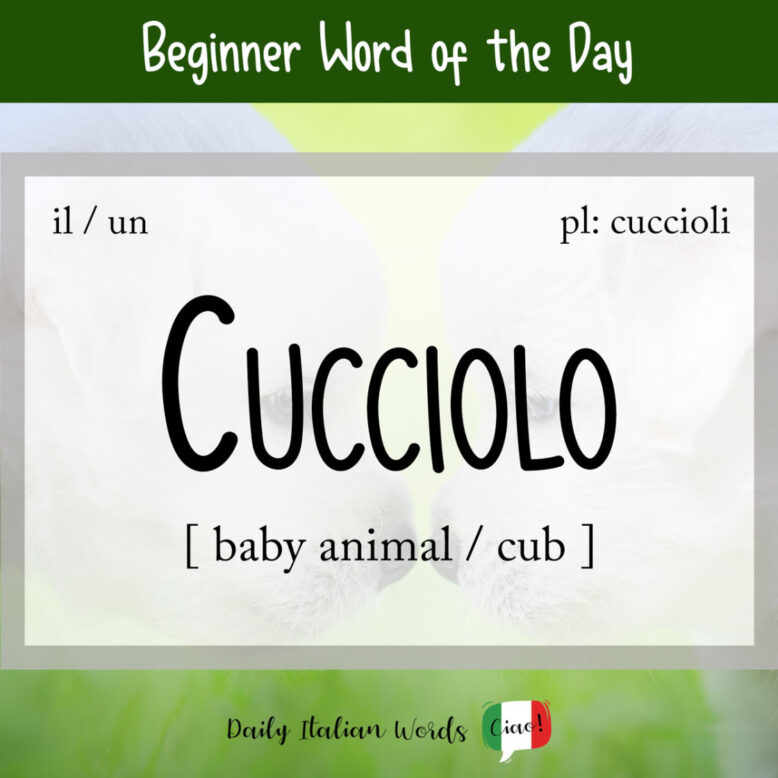The original meaning of the word cucciolo (plural: cuccioli) in Italian was puppy but it has since expanded to include any type of baby animal.

If you want to specify which kind of baby animal you are talking about, simply add the preposition di (of) plus the name of the animal after cucciolo. For example:
- cucciolo di cane = puppy
- cucciolo di gatto = kitten
- cucciolo di orso = bear cub

Sto pensando di adottare un cucciolo di cane.
I’m thinking of adopting a puppy.
Because cucciolo can also function as an adjective, it possible to phrase the aforementioned words in the following way:
- cane cucciolo = puppy
- gatto cucciolo = kitten
- orso cucciolo = bear cub
In addition to animals, cucciolo and the feminine equivalent cucciola are also terms of endearment for babies and young children. Loving couples may also use them as affectionate nicknames for each other. The following diminutives and augmentatives are often used for humans:
- cucciolino / cucciolina = little cub
- cuccioletto / cuccioletta = little cub
- cucciolotto / cucciolotta = big cub
- cucciolone / cucciolona = big cub
In a figurative sense, cucciolo is the word for someone who is young and inexperienced.
Heather Broster is a graduate with honours in linguistics from the University of Western Ontario. She is an aspiring polyglot, proficient in English and Italian, as well as Japanese, Welsh, and French to varying degrees of fluency. Originally from Toronto, Heather has resided in various countries, notably Italy for a period of six years. Her primary focus lies in the fields of language acquisition, education, and bilingual instruction.


